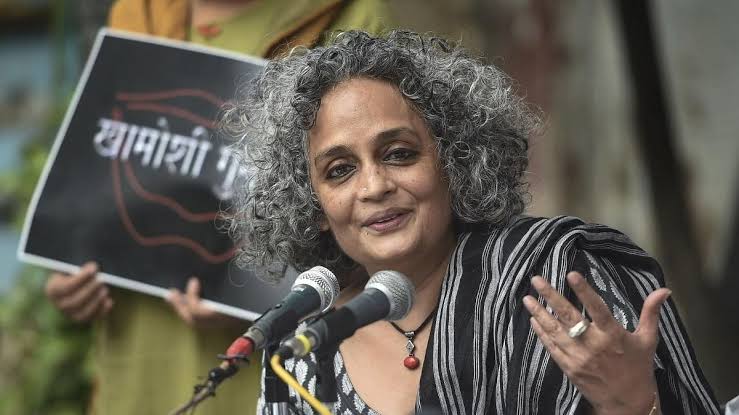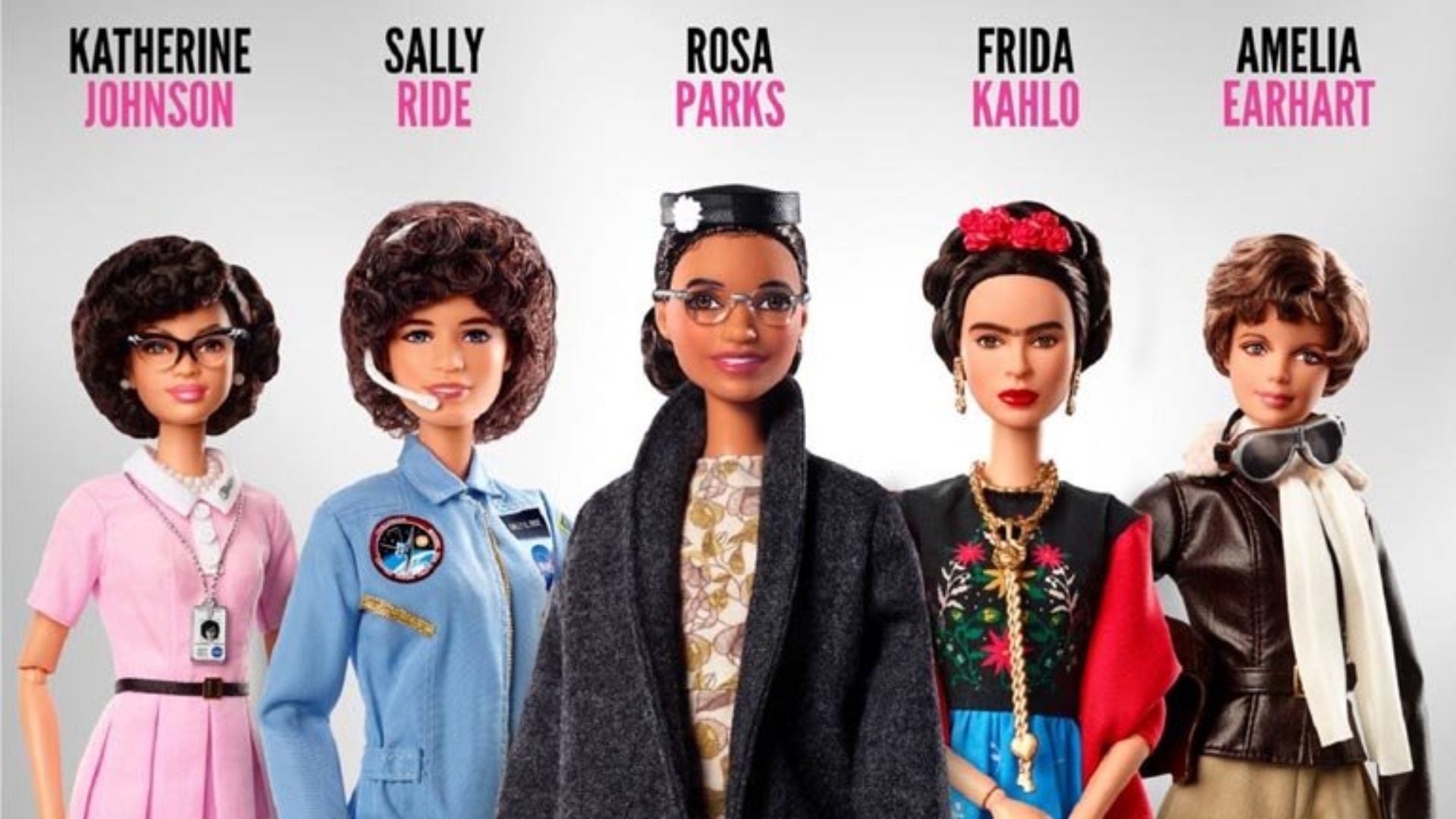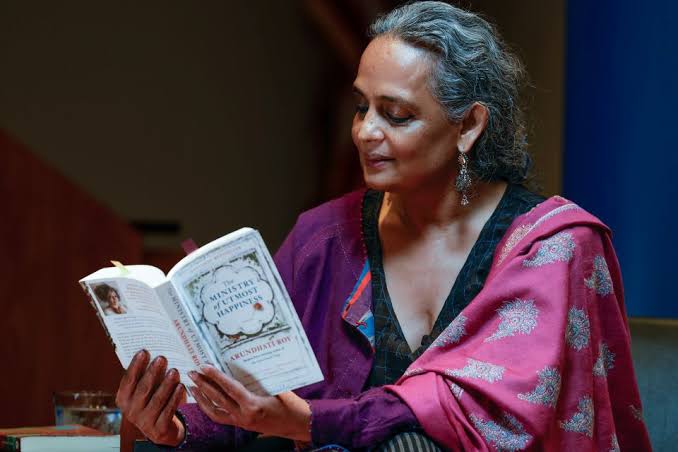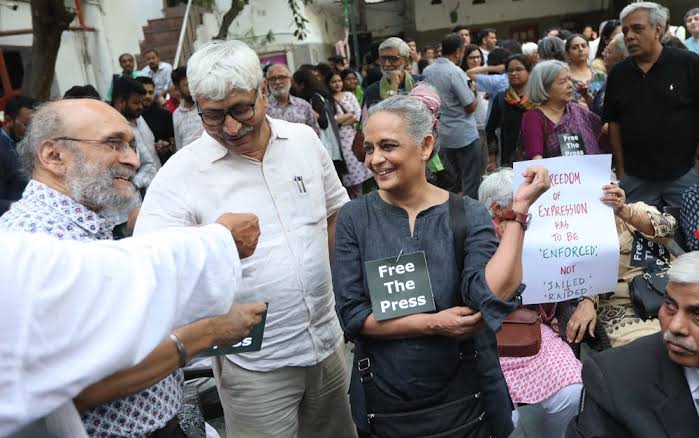This is a thought that has been in my mind for quite some time. In fact, right from the moment I came to know that Mattel, Inc. has honoured Canadian soccer star Christine Sinclair by including her in the “Inspiring Women” series of Barbie dolls.
In this context,the recent action of the Lieutenant Governor of Delhi, VK Saxena, has given a fresh impetus to my conviction that Arundhati Roy, the world renowned inspirational writer and social activist from India should join the growing list of these inspiring women.

After all, the series has celebrated women like Rosa Parks, the towering American civil rights activist of the 20th century. The inclusion of Roy in the list would make perfect sense considering her outstanding record as a writer and an activist and this inclusion would also send a very strong message to those sitting in the powerful Indian Establishment, who are using every tool to suppress any voice of reason, and that too in the garb of democracy.
Indeed, over the last few decades, Roy has faced innumerable instances wherein she has been targeted by governments and other forces flaunting diverse ideological hues and colours, but the Right wing Hindutva brigade has been the main ideological apparatus that has consistently sought to persecute her. Saxena’s recent action on behalf of the Prime Minister Narendra Modi led Hindu nationalist Bharatiya Janata Party (BJP) government, which has come back to power with depleted numbers in parliament, marks the latest in the series of such attempts.
He has not only sanctioned the prosecution of Roy, but also that of the former Central University of Kashmir law professor Sheikh Showkat Hussain on the charge that their speech in 2010, in support of the right to self-determination by the people of Kashmir, is an act of sedition. The order by Saxena is on the basis of a complaint filed by Sushil Pandit in the Metropolitan Magistrate Court in New Delhi. Interestingly, Pandit had submitted his petition in November 2010. Interestingly, Saxena has woken up to the complaint 14 years later.

This new act of persecution certainly merits a fitting reply from the promoters of the “Inspiring Women” series. Since its beginning, Mattel Inc. has recognized not only non-white female figures, but also those with motivating stories. And why not, as we need our daughters to grow up not only as career women, but also as social justice activists?
When Barbie was initially introduced years ago, it was more like a fashion doll catering to Eurocentric tastes and environment, something people of colour like me, coming from a country with a history of colonial repression could not relate with. It represented predominantly white blonde beauty that ruled the Hollywood and modelling industry.

In the last few years, the company has really evolved by creating dolls with features of other races, such as Black, Asian, Latino and the indigenous groups of Australia and North America. This had become even more necessary in an era of decolonization.
Then there is a growing list of inspiring women, who cannot be all white. The Barbie club has rightfully included Frida Kahlo, a Mexican painter apart from Parks, the Black American activist who refused to give up her seat for a white passenger for the sake of segregation laws on a bus in the US.
Other prominent figures in the list are Eleanor Roosevelt, the US first lady with a legacy of activism, Jane Goodall, a famous anthropologist and an expert on Chimpanzees, Maya Angelou, a prominent poet and civil rights activist, Madam CJ Walker, a self made entrepreneur, who broke many barriers Bessie Coleman, the first African American pilot, Ida Wells, an African American journalist, Anna Maya Wong, an Asian American actress, besides Sally Ride, a famous astronaut and several more.
Parks who was introduced in 2019 by Barbie, was our Christmas gift for our daughter, who was an 11-year-old back then. Not only did it bring a smile on her face, she was carried away by the brief story written about Parks on the box. She later wrote an essay about her, which also explained why Parks remains the favourite among her private doll collection.
Thanks to the legacy of Parks, her interest in the civil rights movement has increased as she turned 16 this year. She now reads books about Black history with a lot of curiosity. The positive impact of such initiatives on young minds was noticed by our family first hand.

Mattel would only be strengthening this inspiring track record by including Roy in their list. She has published two novels, The God of Small Things and The Ministry of Utmost Happiness, besides several political essays and has always stood for the underdog and challenged the Establishment.
The God of Small Things fetched her the 1997 Booker Prize that gave her international recognition.
Roy has been under constant attack for questioning the status quo. Her difficulties have grown little more under the current right wing government, which is highly intolerant to the religious minorities and any voice of dissent.
Some of the scholars close to Roy had to endure imprisonments on trumped up charges, and yet she remained steadfast in her resolve. One of them, a physically challenged Delhi University Professor, G. N. Saibaba was thrown behind bars in 2014 by the previous government, but the present BJP government not only refused to let him go, but did not allow him to see his mother on death bed for the last time.
Saibaba was wrongfully convicted for merely advocating for the rights of the Adivasis or the indigenous peoples of India who were facing eviction from their traditional lands by the extraction industry looking for rich minerals underneath. After having suffered in jail for a decade, he was acquitted by the court early this year and is now a free bird.
Roy had written a very powerful article about his incarceration in the face of possible criminal action by the vindictive Indian establishment. She was slapped with a criminal complaint in the past for speaking her mind, but perhaps her international fame saved her from any action on part of the government.
She has been in the forefront of a campaign against Narmada dam in Gujarat that threatened the livelihood of many and had returned her national award in 2015 following the murders of scholars and the lynching of a Muslim man on suspicion of consuming beef by the supporters of Hindu Right. She was given this award in 1989 for writing a film screenplay.

She has been vocal against an ongoing repression of Kashmiri Muslims asking for freedom. Not only that, she had travelled widely in the heartland of Maoist insurgents in central India to understand their side of the story and wrote a very long essay for the Outlook magazine. During COVID-19, she reported about the plight of the poor from the ground.
She has been consistent in her criticism of power and privilege without taking sides, whether it was the previous, more liberal, Congress government or the present one with an ultra nationalist agenda. So much so, she has been critical of Mahatma Gandhi, who was assassinated by Hindu fanatics. She pulled no punches while criticising Gandhi, who is considered as father of the nation for his belief in caste system even though he challenged untouchability.
Her first novel was also critical of the Communist government in Kerala for its double speak on caste-based oppression and discrimination against Dalits. Her second novel is a moving story of the marginalised sections of India.
She definitely deserves to join Maya Angelou and Ida Bells considering her work in the area of social justice. Barbie has already created a space for female writers and journalists; they only need to make little room for Roy, so that the girls of my daughter’s generation can get inspired by Indian icons like her and make the tyrants across the globe accountable for their misdeeds.

It is high time that the world shed light on people like her who continue to sit in harms’ way and raise voice against State violence in a country like India whose image as the world’ s largest democracy is often taken for granted. In spite of so much intimidation, Roy has not remained silent and continues to tell the world what India really is.
Undoubtedly her image should get crystallised in the “Inspiring Women” series as a symbol of courageous social and political resistance against oppression.
Courtesy: The AIDEM

